Key people
The foundation of the Microbiology Society was laid in 1943 at the Annual General Meeting at the Society for Applied Microbiology. It was decided that the time had come to promote the advancement of microbiology by forming a Society that would provide common meeting ground for those working in the various specialised fields. Learn more about the key individuals who helped to shape its foundation here.
Key people
-

Sir Alexander Fleming
Founding member and first President of the Microbiology Society (1945-1947)
The Microbiology Society was formally inaugurated on 16 February 1945, at a meeting of Original Members in London. Sir Alexander Fleming (1881-1955) was elected as the first President. The Society had its origins in the (then) Society of Agricultural Bacteriologists: a number of members of that society had wished to see a broadening of its interests and scope beyond agriculture, to embrace virology, medical and agricultural bacteriology, protozoology and mycology. The idea was to bring members from different backgrounds together to gain the benefits of interdisciplinary discussion and learning from each other. This aim of the founders is still, after more than half a century, central to the ethos of the Microbiology Society. It underlies the growth of the Society, from 241 Original Members, to its present position as the largest microbiological learned society in Europe.
-
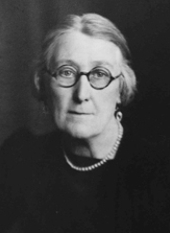
Marjory Stephenson FRS
Founding member and former President of the Microbiology Society (1947-1948)
Marjory Stephenson FRS (1885-1948) was a member of the inaugural committeee and co-founder of the Microbiology Society.
She had a fundamental role in establishing the Society it's in very early days and was responsible for giving it the original name: The Society for General Microbiology despite suggestions to name it "The Leeuwenhoek Society for the Study of Living Things." Her contributions to shaping the Society led to her being unanimously elected as its second President in September 1947.
-
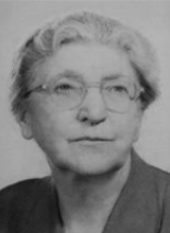
Muriel Roberston FRS
Founding and Honorary member of the Microbiology Society
Muriel Robertson (1883–1973) was a protozoologist and bacteriologist at the Lister Institute, London, from 1915 to 1961. She was one of the founding members of the Microbiology Society and served as a Council member from 1945 to 1948. The Society made her an Honorary Member in 1962, and on her 80th birthday in 1963 she delivered the Marjory Stephenson Memorial Lecture.
Muriel was born in Glasgow and graduated from the University of Glasgow with a Master of Arts in 1905. She was known for her work on trypanosomes, studying trypanosome infections in reptiles in Ceylon and Trypanosoma brucei gambiense in Uganda. She became a Doctor of Science at the University of Glasgow in 1923 after writing her thesis on the ‘life histories of certain trypanosomes’. She worked at the Lister Institute in London from 1915 to 1961.
Muriel was elected a Fellow of the Royal Society in 1947. She was a Fellow of the Royal Society of Tropical Medicine and the Institute of Biology and a member of the Pathological Society, the Society for Experimental Biology and the Medical Research Club. She became an Honorary Doctor at the University of Glasgow in 1948.
-
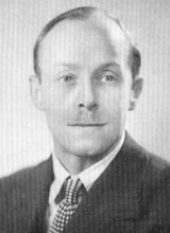
Leslie Alfred Allen
Founding member and first Joint Honorary Secretary of the Microbiology Society
Dr Leslie Alfred Allen (1903–1964) was a dairy bacteriologist who helped found the Society for General Microbiology with Ralph St John-Brooks. Together they enlisted the support and fostered the necessary enthusiasm among a wide range of microbiologists in forming a Society that covered various disciplines of microbiology.
Leslie Alfred Allen was born in 1903 and received his education at Portsmouth Grammar School and the University of Reading, graduating with First Class Honours in Chemistry in 1925. Over time his research began to range from animal feeding-stuffs to milk, hence his work became more related to microbiology and to dairy products in particular. For nine years he was a lecturer at Reading University, being appointed to an Independent Lectureship in Agricultural Bacteriology from September 1930.
-
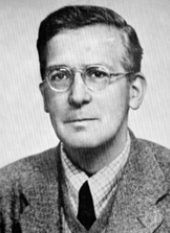
Ralph St John-Brooks
Founding member, first Joint Honorary Secretary and Honorary member of the Microbiology Society
Dr Ralph St John-Brooks (1884–1963) was a bacteriologist who played a crucial part in the foundation of the Society for General Microbiology. Alongside Leslie Alfred Allen, St John-Brooks became the first joint Honorary Secretary of the Society in 1945. He served as a member of the Committee of the Society until he retired in October 1946. In recognition of his valuable services he was nominated by the Committee for election as the Society’s first Honorary Member.
-
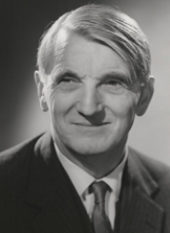
Sir Arnold Ashley Miles FRS
President 1957–1959
Arnold Ashley Miles (1904–1988) was born in York and read medicine at Kings College, Cambridge. As an undergraduate, he developed what proved to be a life-long interest in pathology. His clinical training at St Bartholomew’s Hospital, at a time when infection was rife and treatment almost entirely non-specific, centred his interest on the mechanisms in microbe and host which could account for the initiation of symptoms, their variety and for the outcome of infection.
During World War II, the Medical Research Council (MRC), at the Government’s request, set up the War Wounds Committee to devise preventive methods, not only in the field and base hospitals but which would also be applicable to civilian hospitals that received air raid casualties and which were not subject to strict discipline. Ashley was a member of this committee and became Director of the MRC Infection Unit at the Birmingham Accident Hospital from 1942 to 1946. He collaborated with Wylie McKissock and Joyce Wright and they published the first controlled experiment of methods to reduce wound infection in hospital. He also devised simple experiments which nurses could perform to demonstrate to their own satisfaction that apparently clean sites could be heavily contaminated.
-
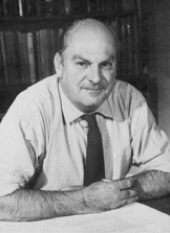
Bert Cyril James Gabriel ‘Gabe’ Knight
Founding member of the Microbiology Society.
Bert Cyril James Gabriel ‘Gabe’ Knight (1904–1981) was best known for his pioneering work in bacterial nutrition. An Original Member of the Society, he was also elected Honorary Member and served the Society as an officer continuously for 27 years, longer than any other person in its history. In 1946 he was appointed Joint Editor, alongside Arnold Ashley Miles, of the new Journal of General Microbiology (now Microbiology). The first volume appeared in 1947 and he remained an Editor of the Journal for the next 23 years.
Born in 1904 in Reigate, Surrey, he was educated at Reigate Grammar School and University College, London, where he graduated with a BSc in chemistry in 1925 and an MSc in 1927.
-
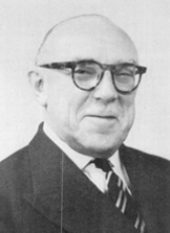
Henry James Bunker
President 1952–1955
Along with Marjory Stephenson and Paul Fildes, Henry Bunker was one of a small group that met together before 1940 to discuss the formation of the Society. When the Society was founded in 1945, Henry became its first Treasurer. As well as his term as Society President, he was elected to serve on the Council for two further periods, 1957–1960, and 1963–1967, after he had retired from the Presidency. The Society made him an honorary member in 1967.
Henry Bunker (1897–1975) was born in London on 27 April 1897 and educated at St Olave’s Grammar School. He returned after World War I to St Catharine’s College, University of Cambridge, to take a degree with botany as the principal subject. On leaving Cambridge, he took up his first professional position, as Assistant Bacteriologist in an Admiralty research organisation, the Royal Naval Cordite Factory at Holton Heath in Dorset.
-
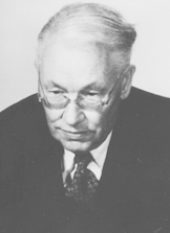
Sir Christopher Andrewes FRS
Christopher Andrewes (1896–1987) began his career as an assistant resident physician at the Hospital of the Rockefeller Institution in New York City, where he stayed for two years. Having decided to pursue a research career in virology, a field in which he spent nearly 40 years, Christopher joined the scientific staff of the Medical Research Council at Hampstead in North London in 1927, where he worked on the role of viruses in transmittable tumours in animals.
Between 1930 and 1933, while working at the National Institute for Medical Research (NIMR), Christopher and two other men, Patrick Laidlaw and Wilson Smith, researched and identified for the first time the human influenza virus, type A. From 1946 to 1960 they tried to isolate the virus in the laboratory.
-
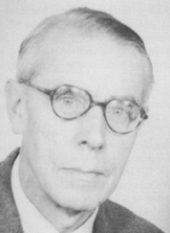
Kenneth Manley Smith FRS
Founding and Honorary member of the Microbiology Society
Dr Kenneth Manley Smith FRS (1892–1981) was a pioneer of plant and insect virology. He was best known for studying the relationships between viruses and their vectors and was among the first to realize that viruses differed in their vector relationships. He was co-opted on to the committee which was responsible for founding the Microbiology Society and served on the Committee of the Society from its inauguration in 1945 until 1948. The Society made him an Honorary Member in 1972.


